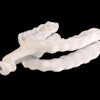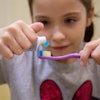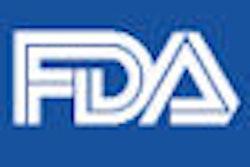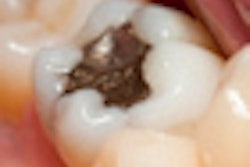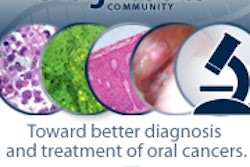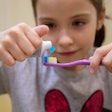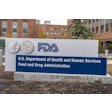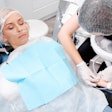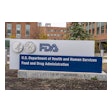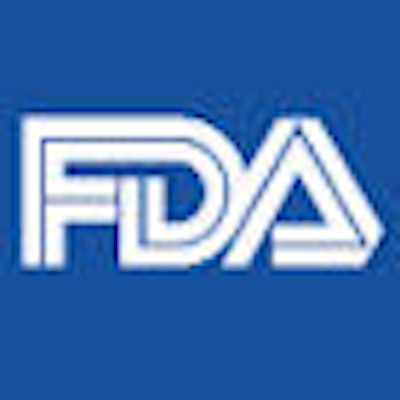
A small cluster of protesters, carrying tooth-shaped signs with slogans such as "Ban Mercury," heralded the opening of a two-day meeting today in Washington, DC, called by the U.S. Food and Drug Administration (FDA) to revisit the safety of dental amalgam.
The restorative material, a mixture of metals including powdered alloy and liquid mercury, has been valued for years for its workability, low cost, and strength. But is it really safe? That is a question that an FDA advisory panel made up of experts in toxicology, risk assessment, epidemiology, and pediatric medical and dental specialties has been charged with considering.
Based upon the panel's feedback and its own review of testimony about risk assessment and the value of various clinical studies, the FDA will decide whether to make changes in how it regulates the use of dental amalgam.
"We have asked this group of experts to take a close look at the data available and help us determine whether analysis is complete and addresses all patient populations," explained Nancy Stade, deputy director for policy at the FDA's Center for Devices and Radiological Health.
3 key questions
The safety of dental amalgam remains a source of deep controversy. Some critics of the restorative material, including speakers attending the meeting, are convinced the mercury it contains causes a range of diseases, including Alzheimer's disease and autism.
"The message here is that mercury is a neurotoxin and mixed dental amalgam is a neurotoxin," said Jim Love, a Tulsa, OK, lawyer representing several consumer groups who are fighting for stiffer controls of mercury.
“The gaps in knowledge demand a class III classification.”
— Jim Love, lawyer representing dental
mercury opponents
Mercury, including that contained in dental products, has been banned in Denmark, Norway, and Sweden.
Meanwhile, while the ADA supports the continued use of amalgam as "a safe restorative option for both children and adults," the World Health Organization (WHO) is preparing to issue a report that confirms the ongoing need for dental amalgam but also sets the stage for phasing down its use worldwide.
In reopening questions about the safety of amalgam, the nonvoting panel gathered for the FDA meeting has been asked to weigh hours of testimony and pages of expert reports to explore three key questions:
- How much mercury are people with amalgam fillings exposed to?
- What is the optimum safety threshold for mercury exposure?
- What are the strengths and weaknesses of existing clinical studies on the potential health risks of dental amalgam, and how should they be interpreted?
Following years of debate, in July 2009 the FDA issued a final rule that reclassified dental amalgam and its component parts as class II devices and designated special controls for the materials. But the rule did not go nearly far enough to protect consumers, according to individuals and groups such as Moms Against Mercury who petitioned for the meeting.
"It's unfortunate I had to wait 30 years to find out what the dentist put in my mouth," testified Virginia plastic surgeon Richard Edlich, MD, PhD, who spoke from an electric wheelchair and blamed his debilitating multiple sclerosis on a large amalgam filling he received three decades ago.
Dr. Edlich asked the panel to consider requiring dentists to give patients informed consent literature about mercury risks.
Other speakers argued that the FDA underestimated the level of exposure to mercury from dental amalgam and failed to fully consider differences among different age groups and genders that could affect the absorbed dose. They also asserted that the reference exposure level (REL) of 0.3 µg/m3 set by the FDA to assess risk for mercury exposure is not sufficiently protective.
They also disputed the methodology, conclusions, and the FDA's interpretations of human clinical studies of amalgam.
Not enough research
|
Public testimony from FDA amalgam meeting
Georgia dentist William Waymon King III, DMD, appeared before the FDA advisory panel December 14 wearing a gas mask. "Change the words from chromium 6 to mercury vapor and you have the Erin Brockovich story all over again," he shouted. He suggested the FDA had been suppressing the dangers of mercury in amalgam due to "an unholy alliance between big government and big business. I just wonder if you are afraid the public will find out the truth of what we dentists are exposing them to." Maryland dentist Leslie Grant, DDS, told the panel she supports the use of amalgam and said her organization, the National Dental Association (NDA), which represents more than 6,000 black dentists, does too. "I have amalgam fillings in my mouth. I placed amalgam fillings throughout my pregnancy," she said. "The NDA believes dental amalgam is safe. We trust and respect the FDA." Kristin Homme, a Berkeley, CA, engineer, held the pages of her testimony so close they touched her nose. She said mercury in her fillings destroyed her sight, and her ability to have children, and her career. She said that in the old days she followed the amalgam debate with amused detachment. "I knew that crazy people had their fillings removed," she said. "I knew there was no convincing evidence" of the dangers of amalgam. Then she got sick. "I now lead a mercury poisoning support group -- one physician, one dentist, four PhDs. We are physically and financially exhausted." She said her health has been returning since she had her amalgam restorations removed but that the damage to her sight is permanent. She warned the panel that epidemiology is "probably too weak a tool" to use to grasp the way a "chronic, low-dose toxin" can be linked to a "disease with myriad symptoms." Chicago dentist Janet Stopka, DDS, said she became sick in dental school after the day she and other students started working with amalgam. "The next day I woke up unable to bend five of my fingers," she said, and she suffered for years with swollen joints, hearing problems, and an inability to digest her food. "Mercury fillings are a 200-year-old mistake by our profession," Dr. Stopka said. "I detoxed and now I can bend my fingers. My ears are clear and I can eat a cow." |
To better understand the issue of exposure, the panel has been asked to compare the FDA's calculation of exposure compared with estimates accepted by the WHO. The panel will also discuss how variables such as body weight and number of fillings should be considered in estimating mercury exposure.
And the panel is charged with delving into questions about the adequacy of its currently accepted reference exposure level and to weigh the merits of more protective reference exposure levels. The mission is a challenging one.
"Using a bright line between safety and risk may be somewhat naive," suggested panelist Norman Tinanoff, DDS, of the University of Maryland.
"There is never a bright line between safety and risk," agreed Mark Richardson, PhD, a researcher who offered a report prepared for a group called the International Academy of Oral Medicine and Toxicology.
Richardson's report, which examined several different exposure scenarios for dental amalgam concluded that even by the most cautious assessment more than 60 million Americans would exceed the mercury dose deemed acceptable by the U.S. Environmental Protection Agency in 1995.
"When you say that mercury is unsafe, what does that mean for morbity and mortality?" asked panelist Amid Ismail, BDS, PhD, MBA, of Temple University in Philadelphia.
"It means that 63 million Americans exceed a level that for all intents and purposes we know is free of effect," Richardson said.
The panel will deal with questions about the validity and usefulness of the many clinical studies that have focused upon the possible risks of dental amalgam.
In its rule last year, the FDA acknowledged that dental amalgam "releases low levels of mercury vapor, a chemical that at high exposure levels is well-documented to cause neurological and renal adverse health effects." But the rule went on to state that "clinical studies had not established a causal link between dental amalgam and adverse health effects in adults and children age 6 or over."
The FDA also stated in its rule that human clinical data for children younger than age 6 and for pregnant women and fetal exposure were limited.
Petitioners have questioned the methodologies and conclusions of the studies. And they contend that what is still unknown demands an abundance of caution -- and a higher level of regulation.
"The gaps in knowledge demand a class III classification," Love said.
Copyright © 2010 DrBicuspid.com


